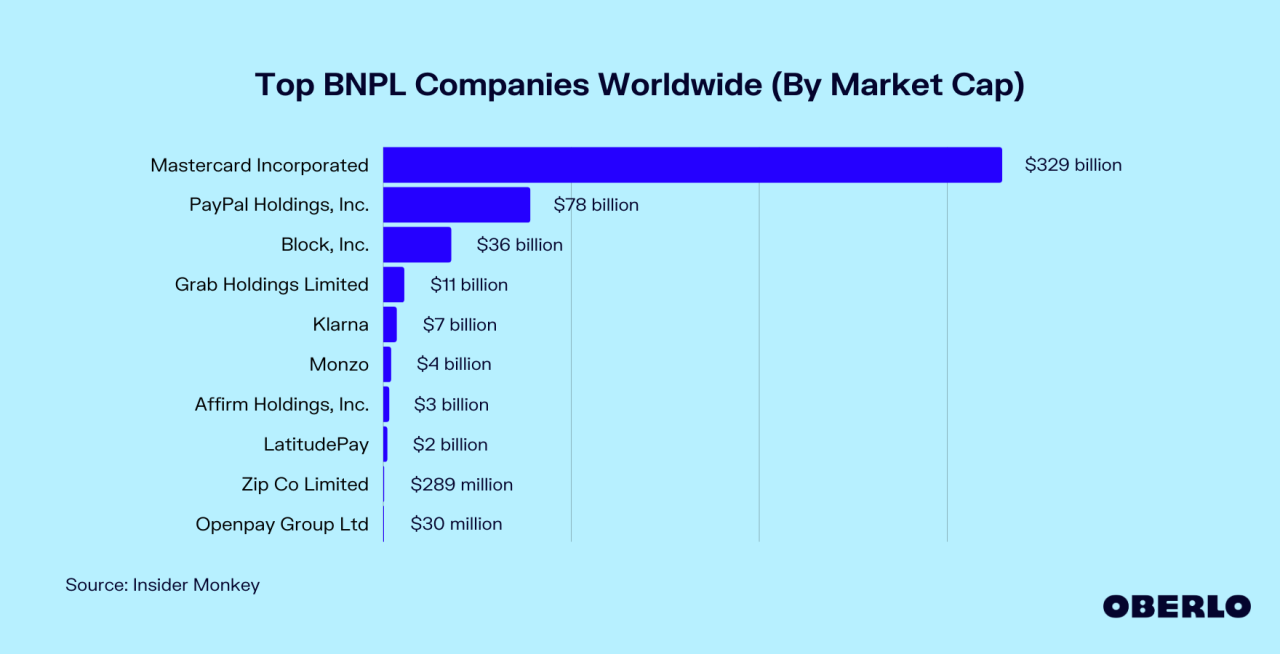“PayPal Credit: Leading the BNPL Market” sets the stage for this enthralling narrative, offering readers a glimpse into a story that is rich in detail and brimming with originality from the outset. In an era where financial flexibility is paramount, Buy Now Pay Later (BNPL) options are transforming the way consumers interact with their purchases. PayPal Credit stands at the forefront of this revolution, empowering users to make purchases while managing their cash flow seamlessly.
With its innovative approach and widespread acceptance, PayPal Credit not only enhances shopping experiences but also reshapes the financial landscape.
As we delve deeper, we’ll explore the key components that make PayPal Credit a leader in the BNPL space, from its user-friendly interface to its strategic partnerships with retailers. Understanding its impact on consumer behavior and the marketplace will provide valuable insights into why this service is essential in today’s dynamic economy.
In a world where information bombards us at every turn, the ability to persuade and influence others has never been more crucial. Whether in business, personal relationships, or social interactions, the art of persuasion holds the key to unlocking doors and creating opportunities. This article delves into the intricate nuances of persuasion, exploring techniques that can elevate your communication skills and enable you to become a master of influence.
Understanding Persuasion: A Psychological Perspective
At its core, persuasion is a psychological phenomenon. It is the process by which an individual or group influences another individual or group to accept a specific idea, belief, or course of action. The effectiveness of persuasion hinges on understanding human behavior and the various factors that drive decision-making. Cognitive biases, emotional triggers, and social norms all play pivotal roles in determining how receptive someone may be to your message.
The Power of Emotion in Persuasion
Research shows that emotional appeals often resonate more deeply than logical arguments. When you tap into your audience’s emotions, you create a connection that transcends mere facts. Consider stories, anecdotes, and vivid imagery that evoke feelings of happiness, empathy, or even fear. By engaging your audience’s emotions, you can effectively steer their decisions and instill a sense of urgency or importance around your message.
The Pillars of Persuasion: “PayPal Credit: Leading The BNPL Market”
To master the art of persuasion, one must focus on several key pillars that serve as the foundation for effective communication:
1. Credibility, “PayPal Credit: Leading the BNPL Market”
Your credibility, or ethos, significantly impacts your persuasive power. People are more likely to be influenced by someone they trust and respect. To build your credibility, demonstrate expertise and authority on the subject at hand. Share relevant experiences, qualifications, and testimonials that showcase your knowledge. Additionally, maintain transparency and honesty; a trustworthy source is invaluable in the realm of persuasion.
2. Reciprocity
Humans are inherently social beings, and the principle of reciprocity plays a significant role in persuasion. When you offer something of value—be it assistance, information, or a genuine compliment—people often feel compelled to return the favor. Leverage this principle by providing tangible benefits to your audience before asking for their support or agreement. This creates a sense of obligation and can significantly enhance your chances of success.
3. Social Proof
People are heavily influenced by the actions and opinions of others. Social proof, or the tendency to look to others for guidance, is a powerful tool in persuasion. Utilize testimonials, case studies, and endorsements from reputable figures to reinforce your message. Highlight the popularity of your ideas or products, showing that many others have made the same choice. This creates a bandwagon effect, encouraging more individuals to follow suit.
4. Consistency
Once someone commits to a belief or action, they are more likely to remain consistent with that commitment. This principle can be harnessed in your favor by getting small agreements or acknowledgments from your audience before presenting your primary request. This tactic, known as the “foot-in-the-door” technique, increases the likelihood of compliance as individuals strive to align their actions with their stated beliefs.
Crafting Your Message: Techniques for Effective Persuasion
The way you craft your message can significantly impact its persuasiveness. Here are several techniques to consider:
1. Storytelling
Humans are wired to respond to stories. A well-told narrative can captivate an audience and make your message memorable. Utilize storytelling to illustrate key points, share personal experiences, or create relatable characters. This technique draws listeners in and fosters an emotional connection, making your message resonate on a deeper level.
2. The Power of Questions
Strategically placed questions can guide your audience’s thought process and lead them to your desired conclusion. Use open-ended questions to encourage involvement and reflection. This stimulates critical thinking and encourages your audience to arrive at the desired answer organically, which can be far more persuasive than a direct assertion.
3. Visual Aids
Incorporating visual elements can enhance your message and make it more compelling. Infographics, charts, and images can simplify complex information and create a lasting impression. Visual aids not only capture attention but also facilitate understanding, making your arguments more accessible and persuasive.
Overcoming Objections: The Path to Agreement
Even the most persuasive arguments can meet resistance. Anticipating objections and addressing them proactively can help you navigate these challenges effectively. Here’s how:

1. Empathy and Active Listening
When faced with objections, practice empathy. Show that you understand and respect the other person’s perspective. Active listening ensures you grasp their concerns fully, allowing you to respond thoughtfully. This not only fosters a supportive dialogue but also builds rapport, making them more receptive to your viewpoints.
2. Reframe the Conversation
Transform objections into opportunities. Instead of rebutting concerns outright, reframe them by highlighting the positive aspects of your proposal. This shift in perspective can help mitigate resistance and steer the conversation toward a more favorable conclusion.
Conclusion: Becoming a Persuasive Communicator
The art of persuasion is a dynamic, multifaceted skill that requires practice and reflection. By understanding the psychological underpinnings of influence and employing effective techniques, anyone can become a more persuasive communicator. Remember, the key lies not just in what you say, but in how you say it and the connections you build along the way. Embrace the challenge, refine your craft, and watch doors of opportunity swing wide open.



